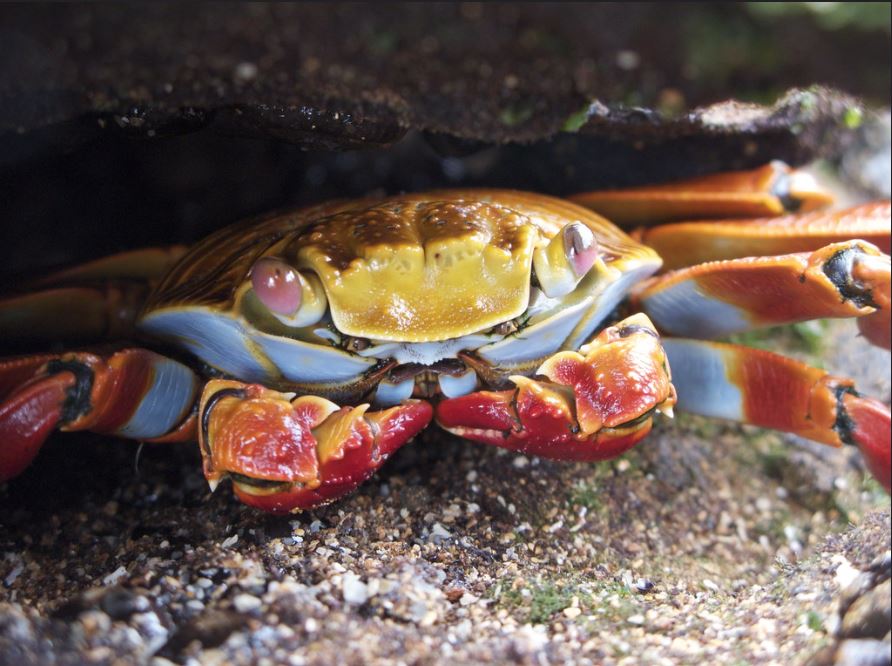TALK TO A DESTINATION EXPERT

Diego Zapata

Rosa Mena

Sandy Lara

Diego Zapata

Rosa Mena

Sandy Lara
Hungry Sally lightfoot crabs at Tagus Cove feast in the most unexpected of ways, sometimes. Frequently seen along the rocky shores these colorful crustaceans are more like swift, ten-legged vultures, scooping up a buffet of meager food items with their claws. The crab is rumored to have been named after a Caribbean dancer, which is no small wonder given its ability to run in four directions (forwards, sideways and backward).
In this journal entry from one of our Galapagos cruise expeditions, we invite you to read about our experience with a specific and rather quarrelsome group of crabs that we encountered.
Docked at No Man’s Land: A Moment With Serenity
Volcanic landscapes are a recurring piece of geography throughout the Galapagos. The existence of these relatively fresh pieces of Earth usually goes hand-in-hand with the presence of yellowish tuff formations or black solid rock that covers the majority of the terrain. Tagus Cove is a natural tuff-formed bay and is located in the northwestern part of Isabela Island. The expedition at Tagus Cove starts with a small panga ride from the Santa Cruz II cruise.
On the other side of the bay, just above the hill, is Darwin Lake – quite possibly one of the most beautiful pieces of scenery in the whole archipelago. The lake is an almost perfectly round saltwater crater with views of the ocean and surrounding island.
This very special place takes its name from the great naturalist, Charles Darwin, who walked its shore.

Sally Lightfoot Crabs at Tagus Cove: Attack of the Freeloaders
On this particular day, a very “common” little creature gave us an outstanding surprise. As we were heading towards the walk, our panga driver Johnny spotted a sally lightfoot crab that had just grabbed a fish. This itself was something very cool to see. But what was even more impressive was that, just as soon as the crab-walked over the tuff, other crabs became aware of their colleagues’ catch and immediately started “running” towards him.
It’s important to note that these colorful crabs are opportunistic predators, meaning they will eat almost anything they come across (including barnacles, young sea turtles, other crabs, and young birds, as well as dead fish, broken eggs, and even bird droppings and sea lion placenta). Their claws are very useful for this varied diet, serving as powerful and sharp spoons that they use to rip apart the meal and then spoon out the goods.
Sometimes, though, the claws turn from utilitarian tools into weapons of war. As the other crabs approached, a food fight became inevitable amongst the small group. After all, a whole fish is a monumental find. It only took a couple of seconds for the other crabs to catch up with the original prizewinner. All five mid-sized crabs surrounded the crab and its trophy and eagerly got into a tug-of-war to get a piece of the fish that the original “fishercrab” clung onto defiantly.
It was really something amazing to see this battle of survival between sally lightfoot crabs at Tagus Cove up close, from within the panga. It only took a few minutes for this whole scene to unfold, allowing for plenty of shots to be taken of this little fight that broke out before us. Amusing to us, intense for them!

Javier Garcia

Eduardo Silva

Carolina Escobar
START PLANNING YOUR TRIP

Javier Garcia

Eduardo Silva

Carolina Escobar
Get in touch for more
CONTACT US

